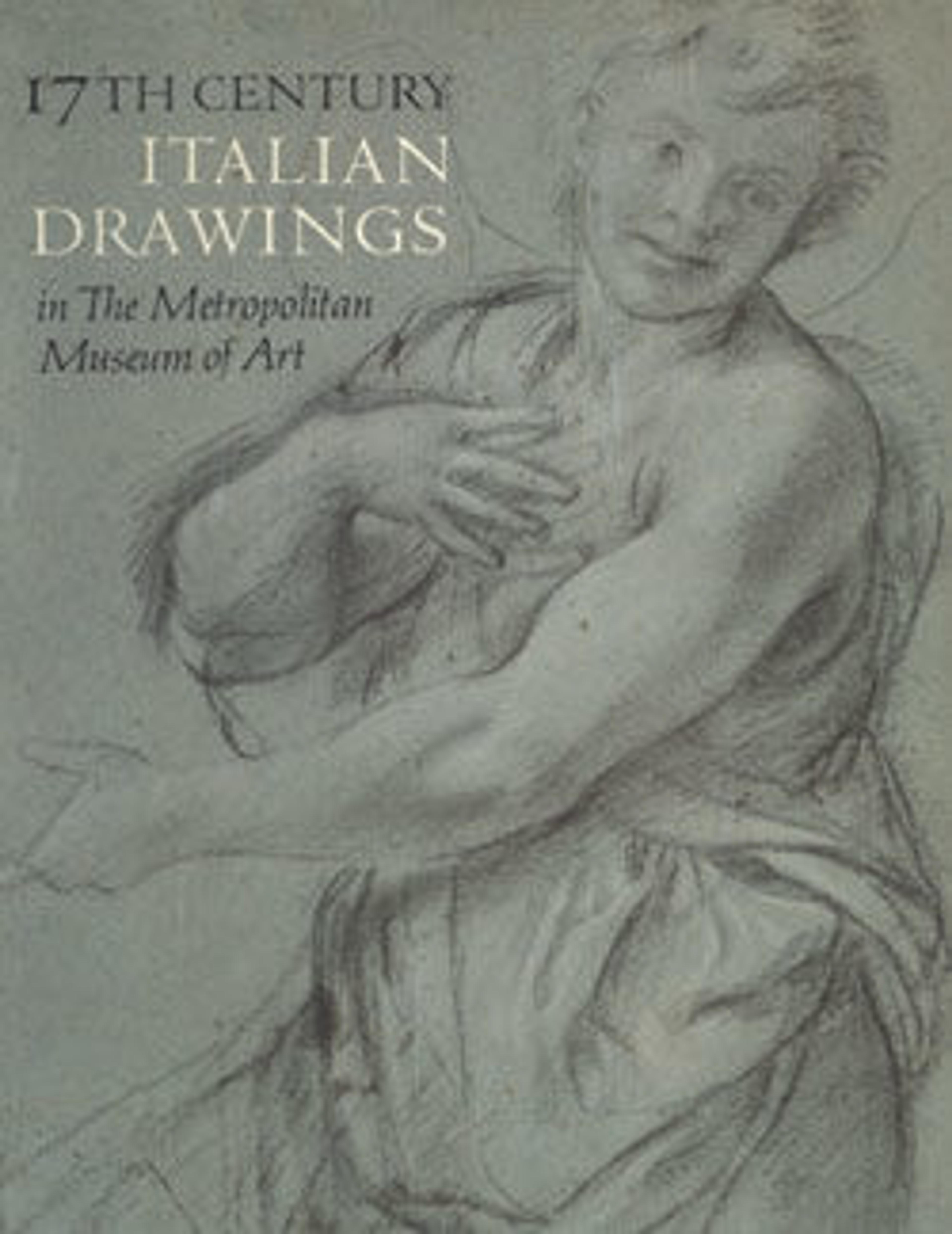The Virgin and Child with Saint Martina, Another Study of Saint Martina, Studies of a Head, and of an Arcade (recto); Figure Studies (verso)
The Roman martyr Saint Martina, kneeling before the Virgin and about to receive a flower from the Christ Child, was a subject frequently painted by Cortona. It was in the course of excavations for the crypt of the church of the Academy of Saint Luke in Rome that the body of Saint Martina was discovered. At the time, Cortona was the architect of the church built on that site between 1635 and 1650 (which was eventually dedicated to both Luke and Martina), and the architectural sketches at the top of the sheet may be related to the artist's plans for the church. Cortona was particularly devoted to the cult of the Roman martyr Saint Martina - a third-century martyr who was put to death for refusing to worship idols – and the subject of another drawing in the Museum’s collection (inv. 1979.3).
Citing the Metropolitan's drawing as one of the earliest images of Saint Martina, Jörg Martin Merz notes a sketch of Minerva in mirror-image visible on the verso, which may be linked to the ceiling fresco painted by Cortona in the main hall (Salone) of Palazzo Barberini in Rome. The sheet may therefore be dated to the 1630s, around the same time that the relics where discovered, and may be a study in reverse for Cortona's painting of ‘The Virgin and Child and Saint Martina’ (Musee du Louvre, Paris, inv. 108). Once attributed to Giulio Romano, then to the circle of Correggio, the drawing was recognized in 1958 as a work of Pietro da Cortona by the late Philip Pouncey.
Citing the Metropolitan's drawing as one of the earliest images of Saint Martina, Jörg Martin Merz notes a sketch of Minerva in mirror-image visible on the verso, which may be linked to the ceiling fresco painted by Cortona in the main hall (Salone) of Palazzo Barberini in Rome. The sheet may therefore be dated to the 1630s, around the same time that the relics where discovered, and may be a study in reverse for Cortona's painting of ‘The Virgin and Child and Saint Martina’ (Musee du Louvre, Paris, inv. 108). Once attributed to Giulio Romano, then to the circle of Correggio, the drawing was recognized in 1958 as a work of Pietro da Cortona by the late Philip Pouncey.
Artwork Details
- Title:The Virgin and Child with Saint Martina, Another Study of Saint Martina, Studies of a Head, and of an Arcade (recto); Figure Studies (verso)
- Artist:Pietro da Cortona (Pietro Berrettini) (Italian, Cortona 1596–1669 Rome)
- Date:1596–1669
- Medium:Pen and brown ink, over black chalk
- Dimensions:6 7/16 x 7 5/16in. (16.3 x 18.6cm)
- Classification:Drawings
- Credit Line:Gift of Cornelius Vanderbilt, 1880
- Object Number:80.3.52
- Curatorial Department: Drawings and Prints
More Artwork
Research Resources
The Met provides unparalleled resources for research and welcomes an international community of students and scholars. The Met's Open Access API is where creators and researchers can connect to the The Met collection. Open Access data and public domain images are available for unrestricted commercial and noncommercial use without permission or fee.
To request images under copyright and other restrictions, please use this Image Request form.
Feedback
We continue to research and examine historical and cultural context for objects in The Met collection. If you have comments or questions about this object record, please contact us using the form below. The Museum looks forward to receiving your comments.
